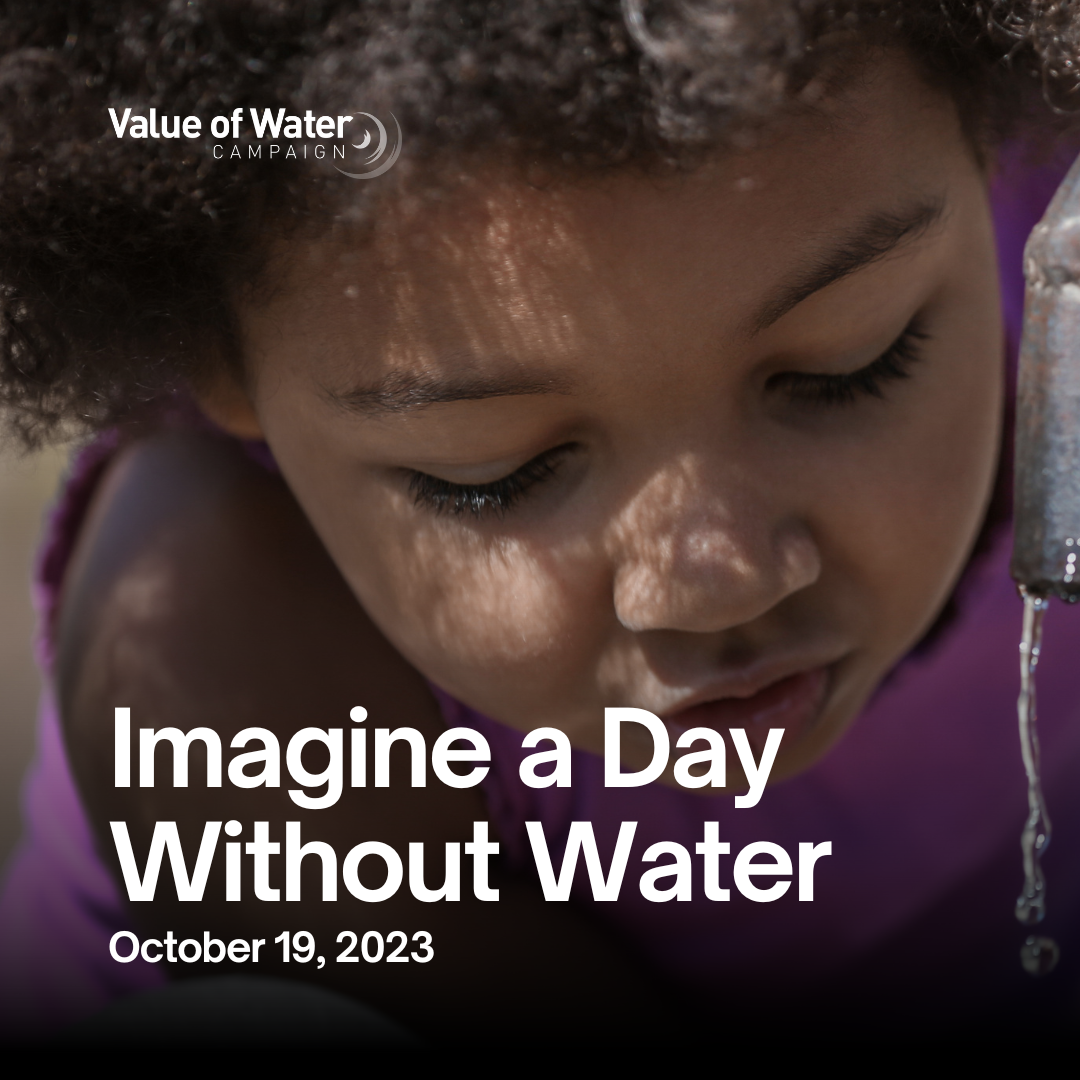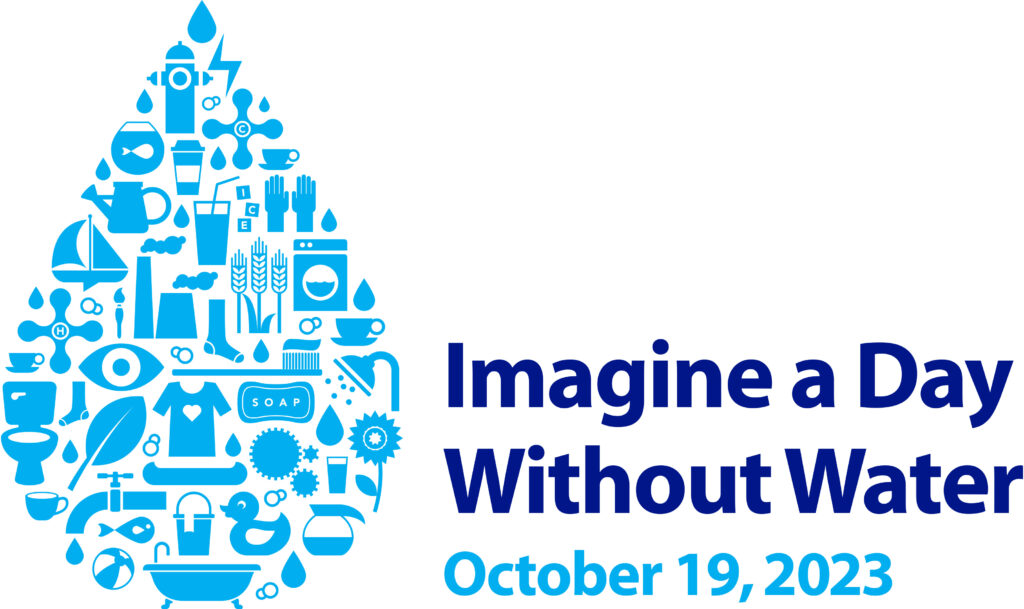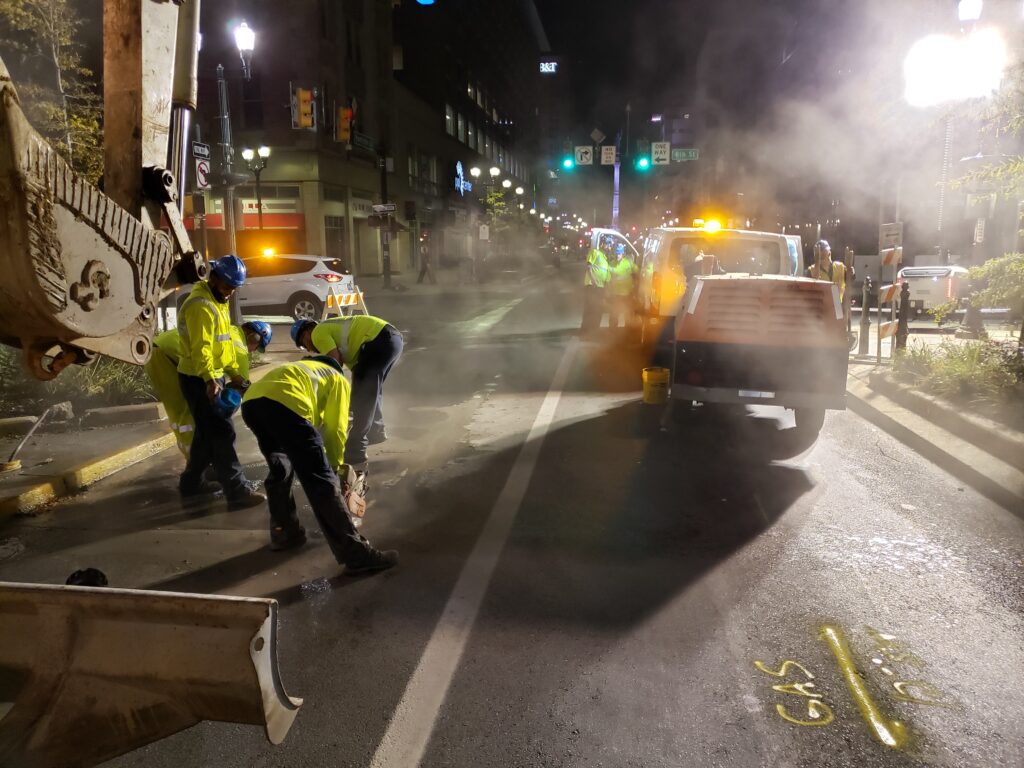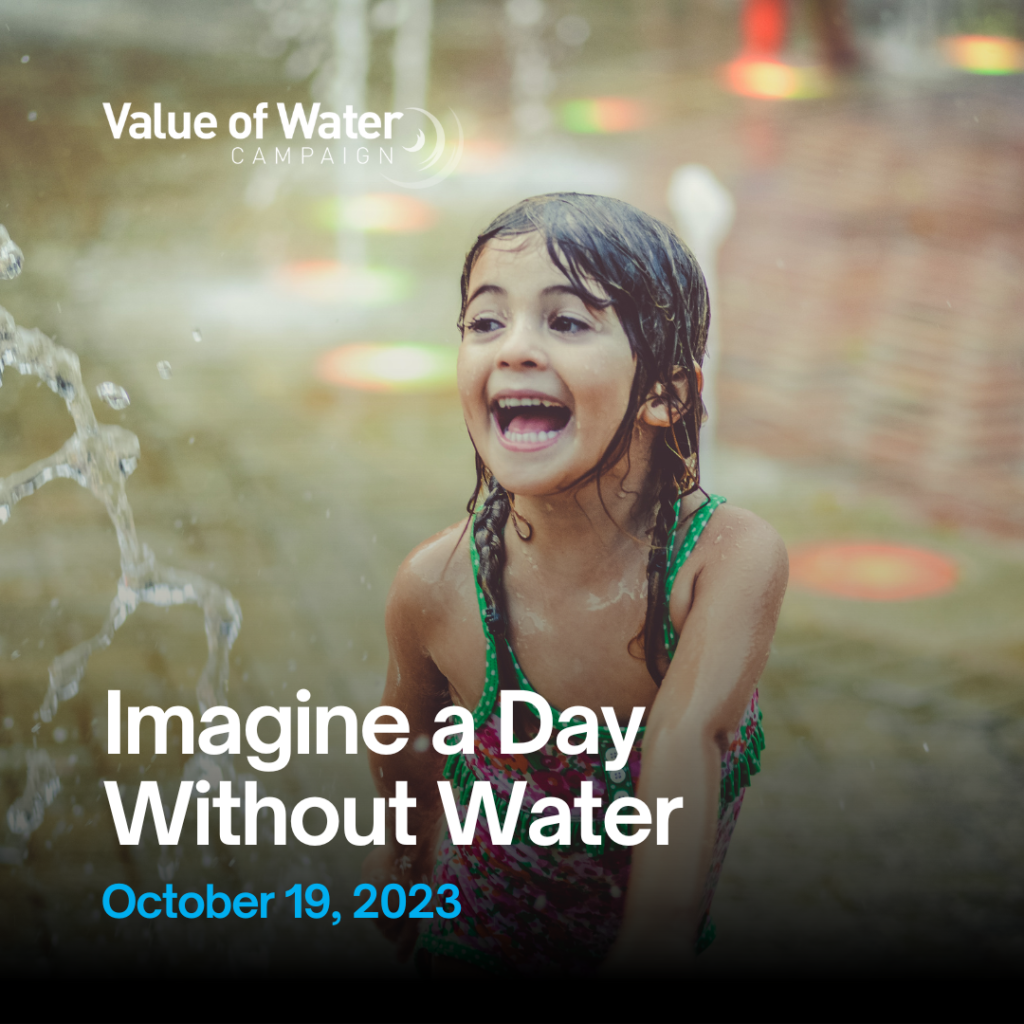It’s Time to Imagine a Day Without Water!
 October 19, 2023
October 19, 2023Imagine waking up and finding out there’s no water.
No water for the toilet, shower, bath, sinks, icemaker, or even the outside hose. No water for coffee; or filling the pets’ bowl; no water for cooking or cleaning.
Now imagine that it’s not just your home, but your entire community: no water for manufacturing; no water for fire crews to keep you safe; no water for farmers to irrigate crops and grow food.
For many Americans — at least two million, according to a 2019 study by the US Water Alliance and DigDeep —this is a reality they face every day. Over the last year alone, polluted water sources, failing infrastructure, drought, and severe storms have left dozens of communities reeling—from West Virginia to Mississippi to New Mexico—as they struggle to restore, repair and upgrade water and sewer service. And that doesn’t even account for the challenges faced by low-income households.

That’s why today, Oct. 19, we’re observing Imagine a Day Without Water, a National Day of Action intended to unite communities and policymakers to advance greater and more equitable investment in water systems.
It’s also a time to consider your own impact on the environment, to think about Source Water Protection, and look for ways that you can help to reduce water use.
A Disconnect at the Tap
Most of us don’t think about where our water comes from, or where it goes. We turn on the tap, and clean water flows out. We flush the toilet, and wastewater goes away.
When you have reliable water service, you don’t have to think about the infrastructure that brings water to your home or business and returns it safely to the environment — but we should. We should also consider how much water we waste, and the impact of chemicals and other pollutants on our source water, because we have a very limited supply. Although water covers 71 percent of the Earth’s surface, almost all of it—96.5 percent—is saltwater. That means just 3 percent is freshwater, and of that, only 1.2 percent can be used as drinking water!
Water is essential to public sanitation and health. In communities with inadequate water and wastewater infrastructure, the public health consequences have been dire.
Water Infrastructure at a Glance
The U.S. water infrastructure is old. In many places, and right here in the Lehigh Valley, some pipes have been in place for more than a century. As this system continues to age and deteriorate, street flooding, water service disruptions, and the resulting damages increase. Each day in the United States, a water main breaks every 2 minutes.
Infrastructure requires regular maintenance, rehabilitation, and updates. Our Capital Plans outline major projects and investments projected over a 5-year period. You can read the plans and learn more about them on our Finance page. Investments in the system are critical in the protection of public health and the environment.
Curious about where your water comes from, and what’s in it? You can find out its source, see water test results, and find out how we treat it with our Water Quality Map. You can also take our Customer Service Line Survey. We have a similar tool that you can use to learn about your wastewater service.

Securing our Future
Imagine a Day Without Water is an opportunity to share why water is important to you, your business, and your community.
Together, we can speak with one voice and ask public officials to take responsibility for our water today and tomorrow.

As an individual, you may wonder where you fit into ensuring a day without water doesn’t become a reality. It’s a daunting task, but our collective voice can make a real, lasting impact. Education is key.
Teach your children about the value of water, too. Get the facts by downloading the Economic Benefits of Investing in Water Infrastructure. Parents and teachers can check out our Water Education page for games and activities that will help show kids the value of water.
Let’s all try to Imagine a Day Without Water — so that we don’t have to face the reality. A day without water doesn’t have to be inevitable. Let’s work toward a future in which a day without water is something everyone can only imagine.